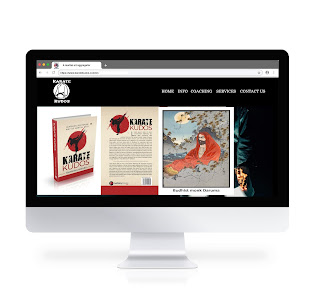Shotokan Karate
Gichin “Shoto” Funakoshi (1868–1957) The Father of Japanese Karate, Gichin Funakoshi, was the school teacher from Shuri who is credited with bringing karate to Japan, thus earning himself the title of ‘Father of Modern Karate’. In fact, he wasn’t alone in bringing karate to Japan. Many karate masters from Okinawa traveled to Japan to promote their art, including Kenwa Mabuni, founder of Shito-ryu, which is a synthesis of Shuri-te and Naha-te, and Chojun Miyagi, founder of Goju- Ryu, which is based on the Naha-te traditions. But it was Funakoshi who did it first and perhaps did the best job of promoting it. Funakoshi started studying karate under Anko Azato and later studied under Itosu. Funakoshi recalls that he spent ten years learning the three Naihanchi (Tekki) kata under Itosu.
In 1950, King Sho Shin built his palace in Shuri, Okinawa for his day to day bureaucratic activities. This is the time and place where the linear style of Shotokan Karate developed and later flourished. The karate style of Okinawa Shuri-te is known to be hardstyle karate martial art from the island using big and strong linear movements. The royal city of Shuri was the capital city of Okinawa. Karate masters in the capital city Shuri have their own kata and traditions; it is the style Shuri-te and later spread in the name of Shotokan Karate.
The origin of two styles of karate, Shuri-te and Naha-te, have their own histories. My book will emphasize the development of Shotokan Karate; thus, more emphasis shall be given to its events and different phases.
Two key events occurred that made Okinawa a unique breeding ground for a new martial art:
1. In 1429, Okinawa was unified under the first Sho Dynasty. Prior to this, Okinawa had suffered from internal conflict between warring clans. To help maintain order, Sho Shin, the second Sho king, banned weapons to control the bickering warlords.
2. In 1609, the Japanese Satsuma Clan of Kyushu invaded Okinawa. They probably found the weapons ban quite convenient and ordered that it be continued. Only the ban was enforced by the Satsuma Samurai, who wielded katana, the deadly Japanese long sword. By 1650, the Japanese were operating a policy of National Seclusion, Sakoku, which barred Westerners from trading in Japan (with an exception for limited trade with the Dutch). This policy was extended to Okinawa. Officially, Okinawa was still a province of China, and so, to keep control of Okinawa while avoiding war with China, the Shuri officials were ordered to deny any connection with Japan. To compound this situation, European and American ships started appearing on the Okinawan shores in the 19th century, carrying explorers, missionaries, and whalers. This conflicted with the Japanese isolationism and put the officials at Shuri in a difficult and dangerous position. They were instructed not to allow trade with the Westerners but were also not permitted to explain that the king of Okinawa was subordinate to the Japanese. Matters worsened in 1853 when Commodore Matthew Perry of the United States Navy paid a visit to Okinawa. His objective was to open trade between Japan and the United States. He decided that a show of strength in Okinawa was needed as a prelude to his negotiations in Japan itself. Perry demanded that he be allowed to see the king to discuss a trade agreement.
As usual, the Okinawan officials politely declined. Perry then landed a force of 200 marines, armed with rifles, two cannons, and two brass bands, and paraded up to Shuri Castle. Perry himself traveled on a sedan chair carried by Chinese coolies. Perry and his entourage marched up to the gates of the royal palace and demanded entry. The Shuri officials allowed him to enter the main hall, where he found the Regent and a small group of his staff. The Okinawans expected Perry to declare himself governor of Okinawa, but Perry had only planned to demonstrate his strength, and having made his point, he returned to his ship. It was a tense incident nonetheless and coming face to face with 200 marines must have had an impact on the staff at Shuri. And, as so many of the karate masters of that day were employed as high-ranking members of the royal household, it is very likely that they would have been there facing Perry and his men.





Comments